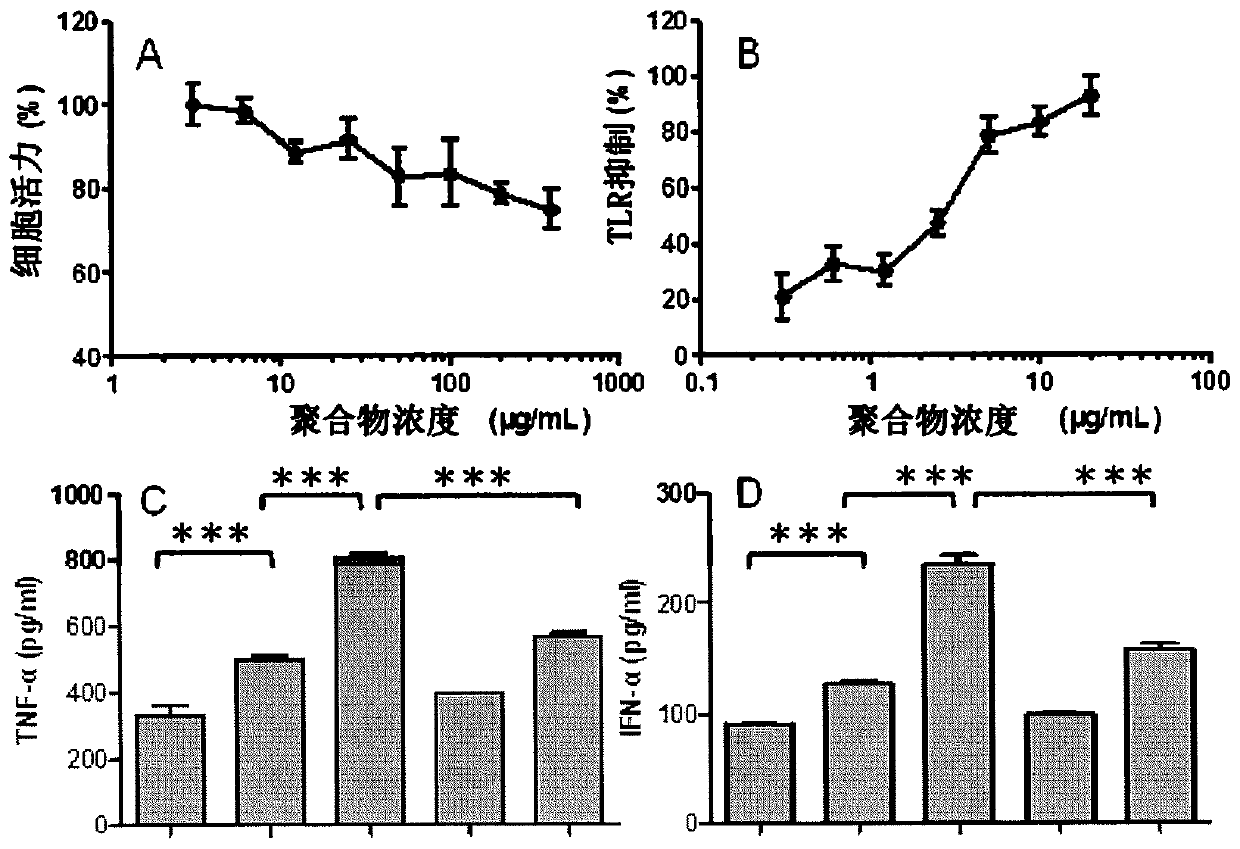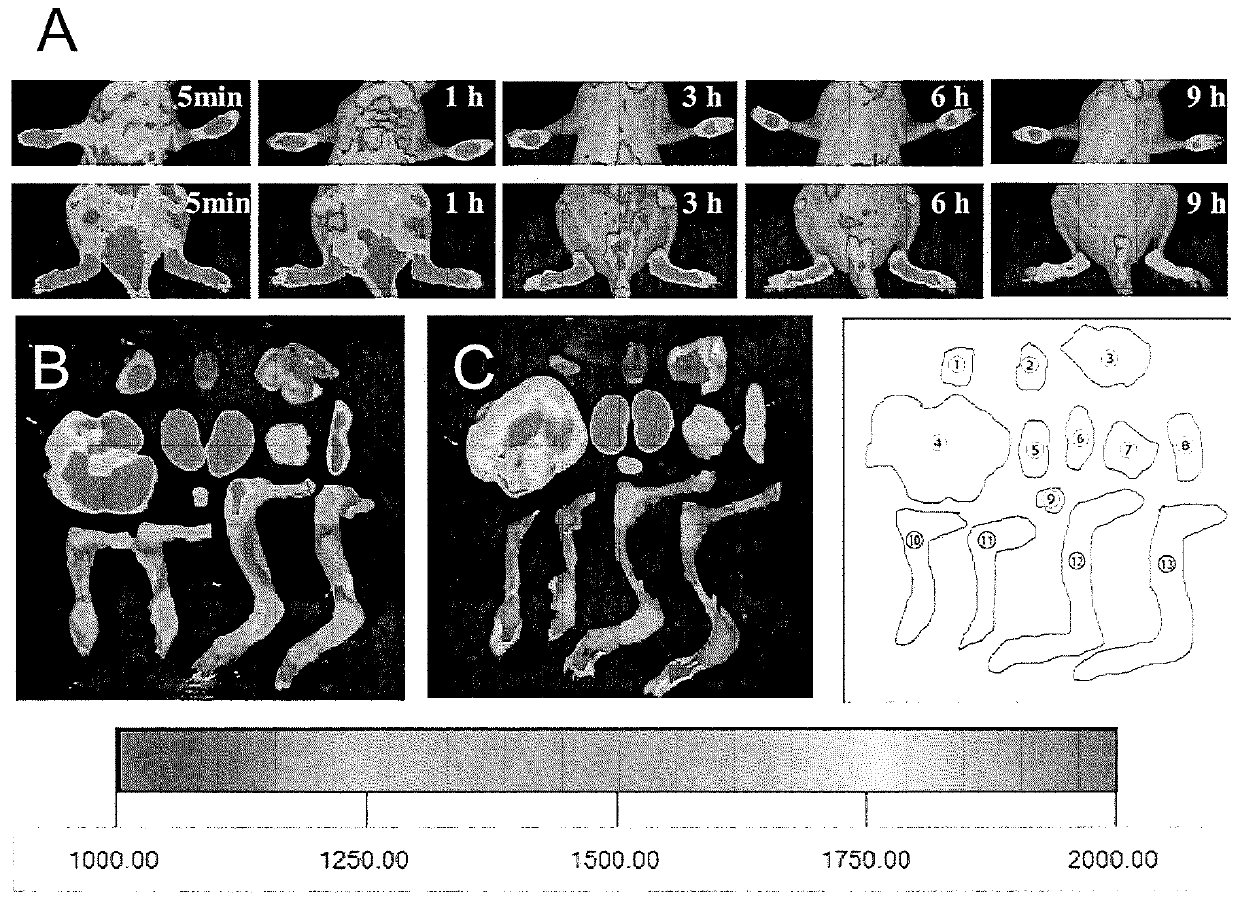Cationic nucleic acid scavenger and uses thereof
A nucleic acid and reagent technology, applied in the field of cationic nucleic acid scavengers, which can solve problems such as interaction destruction and limiting inflammatory activity
- Summary
- Abstract
- Description
- Claims
- Application Information
AI Technical Summary
Problems solved by technology
Method used
Image
Examples
example 2
[0050] Example 2: Generation of polycation-grafted nanoparticles
[0051] The cationic nanoparticles of the present invention are polycation-grafted nanoparticles comprising cationic polydopamine-grafted hectorite synthesized by dopamine-mediated surface modification of hectorite. Laponite is a synthetic phyllosilicate similar to synthetic smectic clays that degrades to non-toxic products at neutral pH. To introduce polydopamine to the surface of hectorite, dopamine was added to the alkaline solution containing hectorite. Synthetic laponite grafted with cationic polydopamine was produced by Michael addition reaction between polyethyleneimine (PEI) and polydopamine. Unreacted PEI and polydopamine were removed by centrifugation and washed repeatedly. After modification, the zeta potential of synthetic hectorite increased significantly from −40 mV to 30 mV, indicating the modification of synthetic hectorite. Synthetic hectorite can be changed to any other inorganic particle, i...
example 3
[0052] Example 3: Generation of Cationic Microparticles
[0053] The cationic particle of the present invention is a block copolymerization synthesized by self-assembly of poly(ε-caprolactone)-block-poly[2-(dimethylamino)ethyl methacrylate] (PCL-b-PDMAEMA) things. While stirring, methanol (a selective solvent for PDMAEMA) was gradually added to the THF (tetrahydrofuran) solution containing PCL-b-PDMAEMA. The solution was allowed to stand for at least 1 hour immediately after the methanol addition was complete. Subsequently, the solution was dialyzed against water for 3 days. (Wang et al., A facile way to prepare crystalline platelets of block copolymers by crystallization-drivenself-assembly, Polymer, 54(25), page 6760, 2013).
example 4
[0054] Example 4: Inhibition of Nucleic Acid Sensor Activation by Water-Soluble Dendritic Polymers
PUM
| Property | Measurement | Unit |
|---|---|---|
| degree of polymerization | aaaaa | aaaaa |
Abstract
Description
Claims
Application Information
 Login to View More
Login to View More - R&D Engineer
- R&D Manager
- IP Professional
- Industry Leading Data Capabilities
- Powerful AI technology
- Patent DNA Extraction
Browse by: Latest US Patents, China's latest patents, Technical Efficacy Thesaurus, Application Domain, Technology Topic, Popular Technical Reports.
© 2024 PatSnap. All rights reserved.Legal|Privacy policy|Modern Slavery Act Transparency Statement|Sitemap|About US| Contact US: help@patsnap.com










